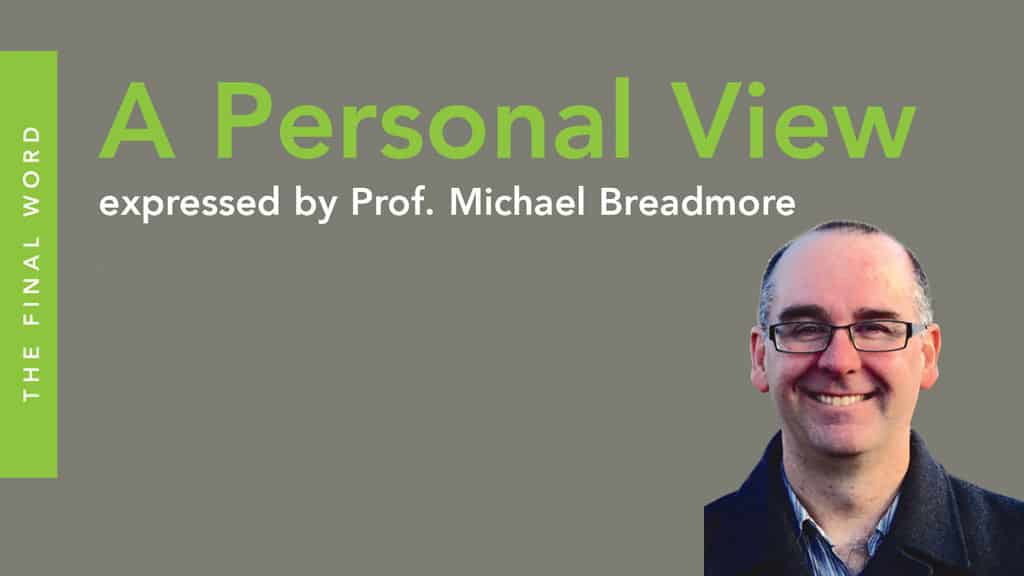There are a number of ways in which an individual can be identified. A photographic ID is the simplest, most well-established form of identification and can be supplemented with machine learning and facial recognition technology. Fingerprints have been used by policing and forensic authorities for what seems like forever and this has recently transitioned into airports at immigration points. So too have facial recognition technologies. Retinal scans and vascular pattern solutions have the potential to penetrate the market soon as well, whilst gait and voice analysis have also progressed to a level at which they can prove useful. Thus, perhaps the combination of all of these at the same time could provide an ideal identification solution? But, will it be enough and is there something better?
…the probability of two individuals having the same DNA fingerprint is approximately 1 in 575 trillion…
DNA fingerprinting is commonly regarded as the ultimate way to identify someone. It relies on the detection of certain sections of the genome that are repeated – called short tandem repeats (STRs). Looking for STRs at one location (loci) is not enough, with the industry standard being 13 loci to create a DNA fingerprint. The probability of two individuals having the same DNA fingerprint is approximately 1 in 575 trillion (the world’s population is estimated to be about 8 billion) so, aside from twins and family members, the odds are unlikely that your DNA fingerprint will match that of someone else. The challenges in using DNA for screening are many but the greatest has always been the ability to technically implement it in a timescale that could be used for checkpoint screening as it is no easy task creating a DNA profile. First, the DNA must be isolated, then the STRs at the 13 different loci are created using a process called polymerase chain reaction (PCR) and, finally, the STR fragments must be detected. Two decades ago, this entire process took six to 12 hours. Recent work has seen this reduced to an hour and I have recently seen potential for this to be done in a minute.
…the $100 genome is not far away and the one-minute DNA fingerprint will not be far behind…
The key innovation to making this quicker has been to miniaturise the entire biochemical workflow. I’ll illustrate this by considering the second step in this process – the PCR step. This requires the temperature to be cycled from 60 – 90°C to allow an enzyme to replicate the STR sequence. Typically, 30 cycles are performed to obtain enough of the STRs to be easily detected and the larger the volume that is used the longer it takes to heat and cool the liquid and, therefore, the slower the process. Thus, heating/cooling a smaller amount of material can be done more quickly and efficiently. This is exactly what has been done with ‘extreme PCR’ – reducing the volume used to just 1 μL and cycle times from two minutes to 0.4 seconds – meaning that the time to complete 30 temperature cycles is reduced from two hours to 12 seconds. Similar innovations in the final process step have been reported, with only the collection and purification of the DNA steps yet to be addressed. Advances in DNA purification have seen the use of a liquid extraction, again using enzymes, and it is reasonable to expect similar improvements in time. Combined, they will make the one-minute DNA fingerprint a possibility.

But… and there is always a but, the bigger issue may well not be whether it is possible, but whether it is affordable. Unlike all of the other approaches mentioned above, creating a DNA fingerprint requires consumables – biochemical reagents for the PCR reaction are needed as is a way to collect the biological specimen, probably a mouth swab that cannot be reused. The biochemical reagents are expensive and, while they will reduce with economies of scale, there will be a fixed cost per analysis and it will be higher than current costs. Will DNA analysis be at a cost the industry will find acceptable?
The $100 genome is not far away and the one-minute DNA fingerprint will not be far behind. We need to start thinking about whether this is really necessary and what an acceptable cost might be for an almost unequivocal ability to identify an individual based on their DNA.
Prof. Michael Breadmore is a professor at the Australian Centre for Research on Separation Science (ACROSS), in the School of Physical Science, University of Tasmania, Hobart, Australia. His research interests lie in the application, understanding and exploitation of the capillary and microchip electro-separation techniques for the analysis of complex samples with real world significance. He can be contacted at: michael.breadmore@utas.edu.au
